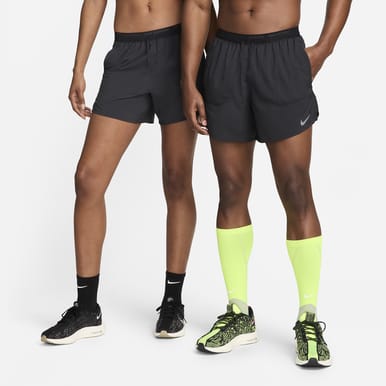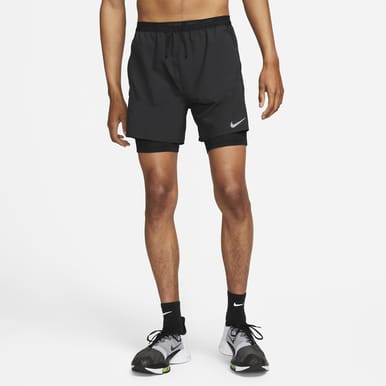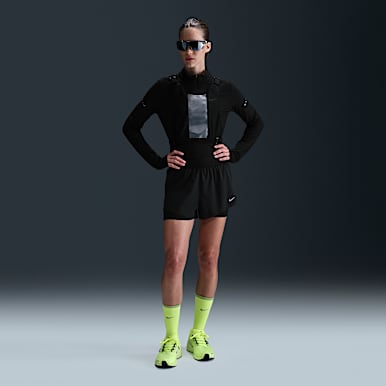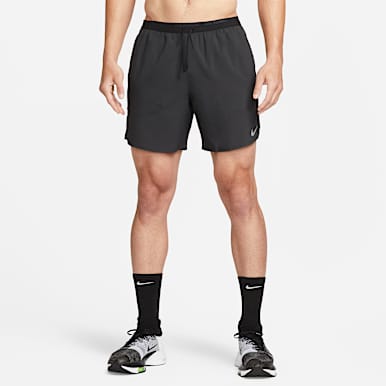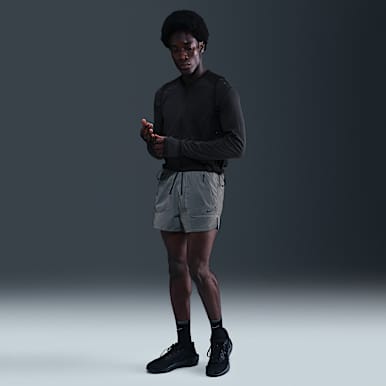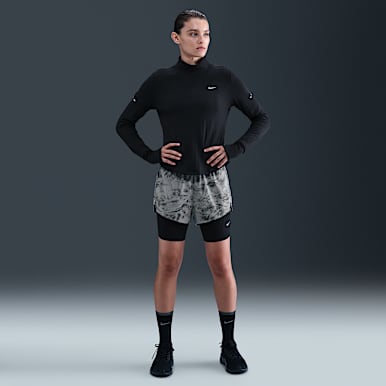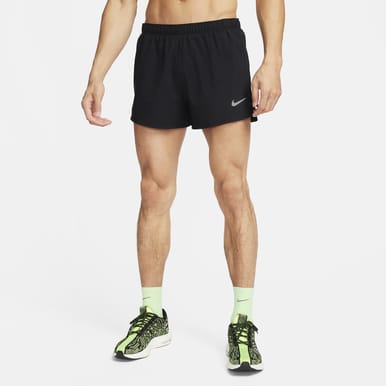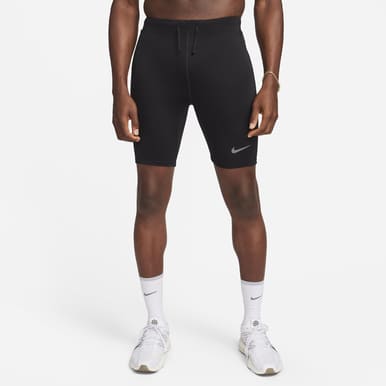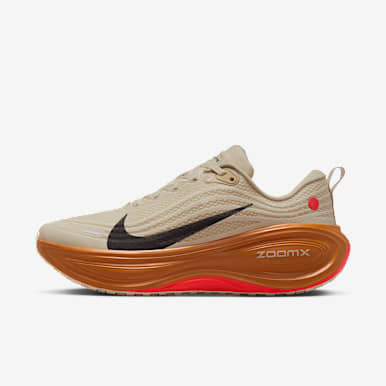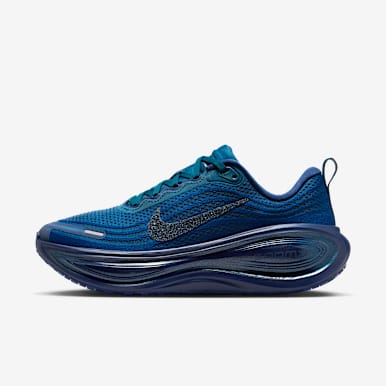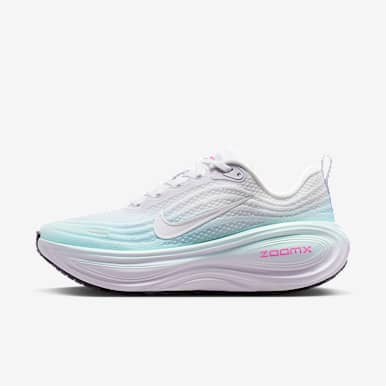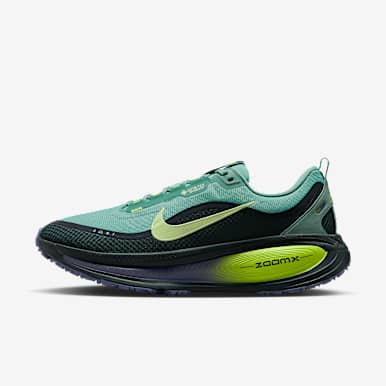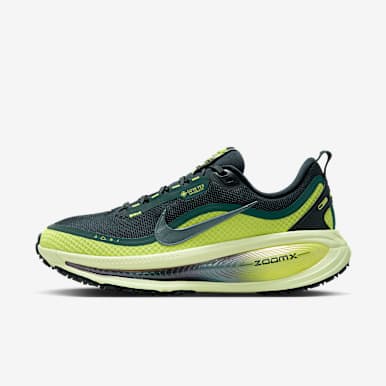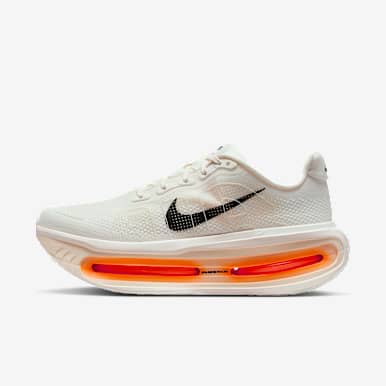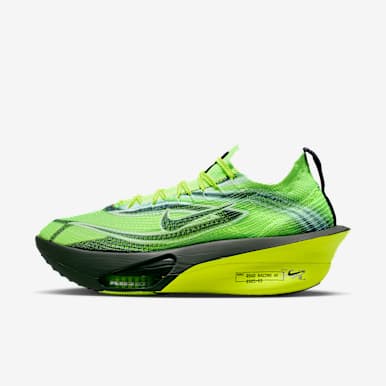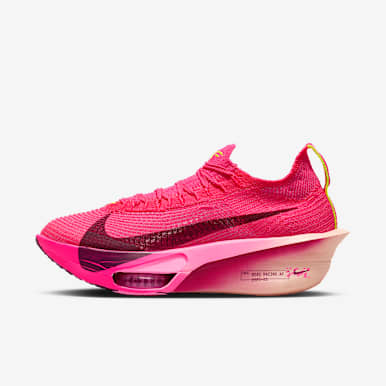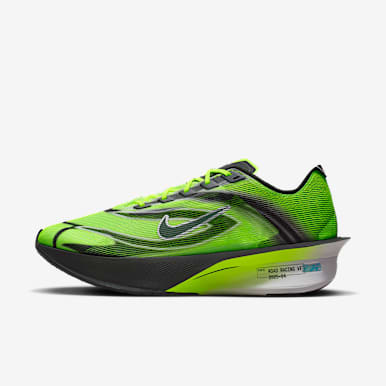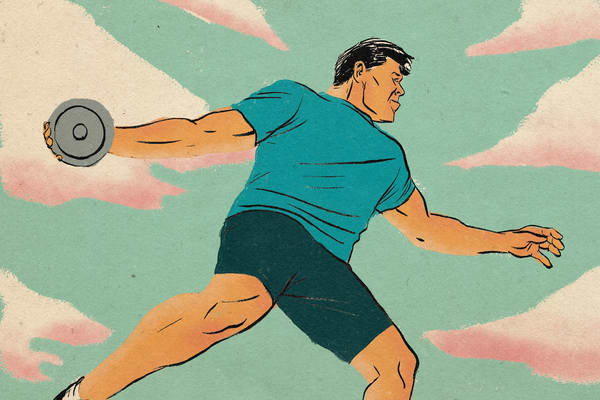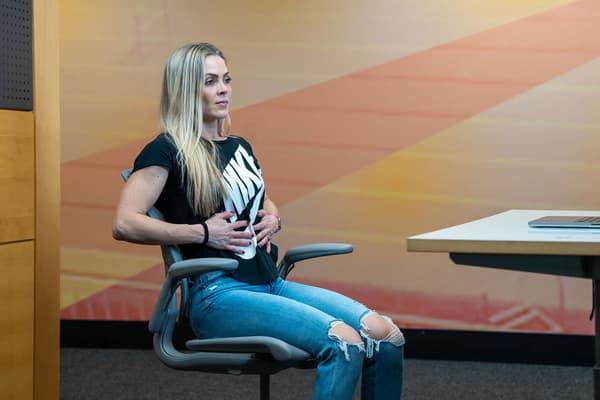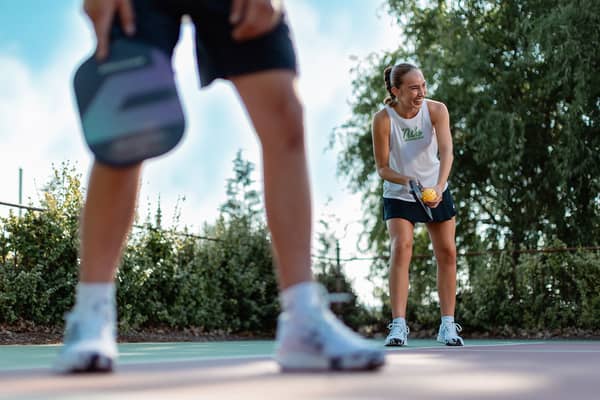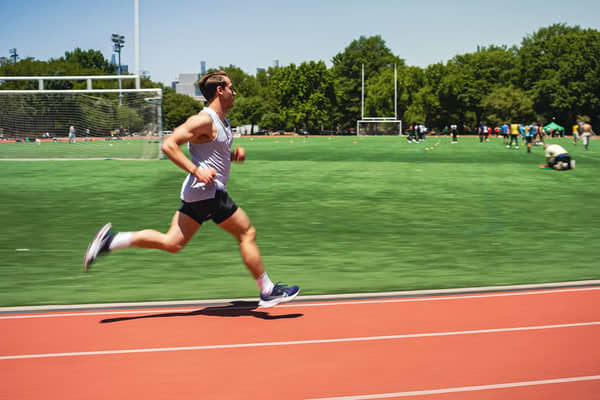What Does It Mean to Be a Quad-Dominant Runner—And What Are the Risks?
Sport & Activity
Here are a few ways to tell if you're quad dominant—and what to do about it to prevent injury and boost performance.
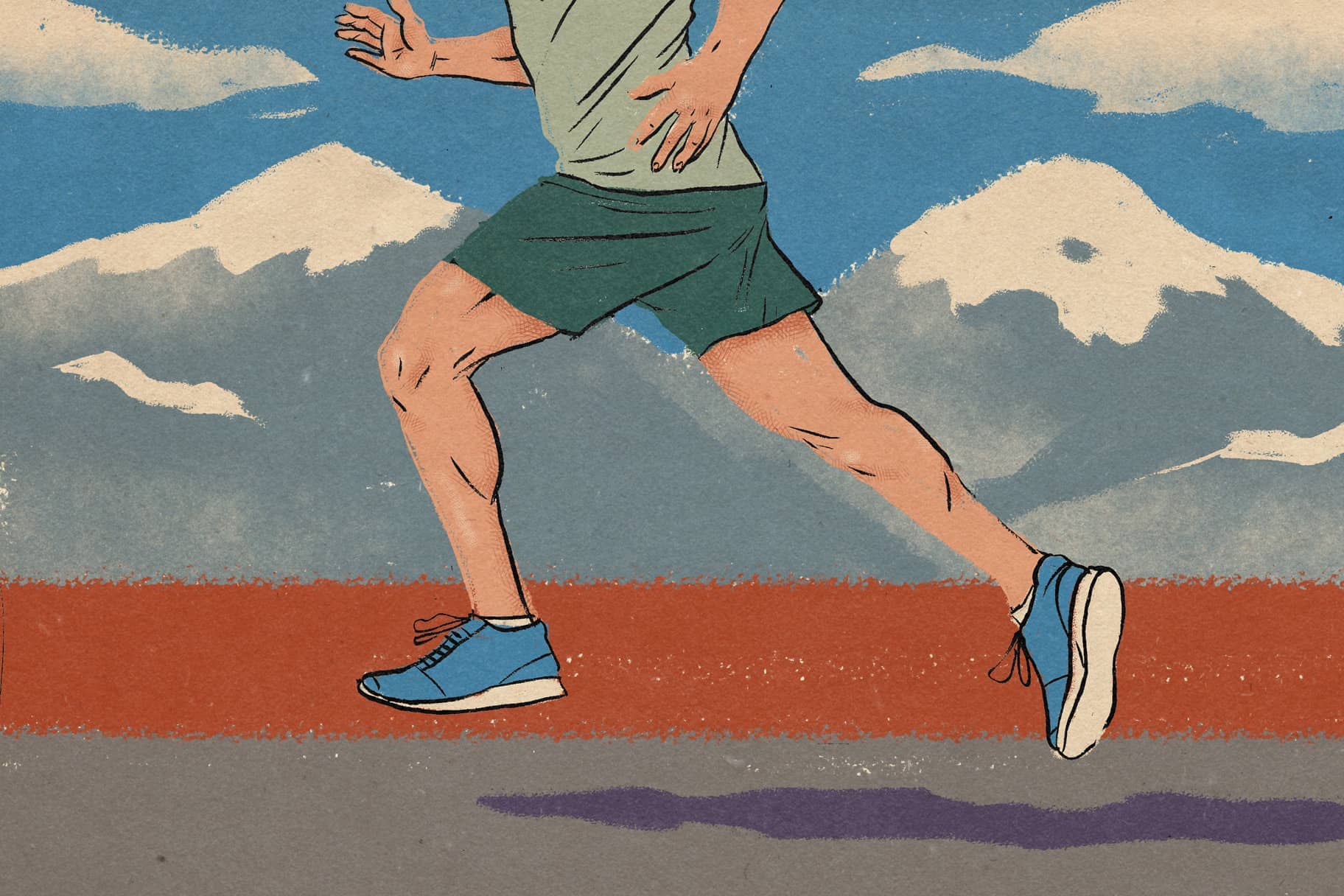
If your quad muscles feel especially tight and sore post-run, you're hit with knee pain when you increase mileage or you just don't feel the burn in your glutes when doing squats, there's a good chance you're quad dominant (or, overusing your quads).
While being a quad-dominant runner isn't a bad thing in and of itself, it often creates a negative chain reaction that can lead to poor form and running injuries like knee pain and shin splints. Here's how to tell if you're quad dominant—and what you can do about it to prevent injury and boost your running performance in the long run.
(Related: How to Increase Your Running Mileage Without Getting Injured, According to Experts)
What Is Quad Dominance?

What is "quad dominant", exactly? "As the name suggests, quad dominance is an imbalance that happens when your quadriceps—a group of four muscles that make up the front of your thigh—are over-utilised in comparison to the muscles on the backside of the legs—namely, the hamstrings, glutes and calf muscles", said Jason Machowsky, CSCS, RD and registered clinical exercise physiologist.
Your quads are an essential mover for any lower-body activity, like running, but problems can arise when they take on more than their fair share. "Quad dominance means the distribution of the force to do the work is just too heavily skewed towards the quads", Machowsky said.
How Do You Know If You're Quad Dominant?

"If you're a regular runner and are always super sore and stiff in your thighs and quads, or tend to feel the effort in your quads and not so much in your glutes, hamstrings and calves during other types of activities, that is a sign of quad dominance", Machowsky said.
This might also cause you to feel extreme tightness when you're doing quad or hip flexor stretches. You may even experience limited hip extension capacity. These early warning signs are subtle, but they can create a ripple effect that can eventually lead to pain.
One hallmark sign of quad dominance is "runner's knee", a casual term for an overuse injury called patellofemoral pain syndrome and one of the most common causes of knee pain. The reason for that?
"Almost always when someone is quad dominant they're going to have tight quads as well, and that is going to put tension on the kneecap. That compresses the knee cap into the knee joint and all of a sudden you have knee pain when you're walking or when you're going down stairs", said Grayson Wickham, DPT, CSCS.
Tight quads and hip flexors can also lead to shin tenderness and pain—or shin splints—as well as hip pain and injury. "Even lower-back pain could be a sign of less than optimal hip mobility and specifically glute strength and activation. Because when someone doesn't have glute strength or mobility and activation, their lower back will have to compensate. A lot of these things are a chain reaction", Wickham said.
In sum, quad dominance simply overloads the joints and muscles.
"The body is like a machine—it can tolerate force up to a certain extent, but if you end up overdoing that force, things can start to break down if left unchecked", Machowsky said. That could mean eventually wearing away cartilage in the knee, which is why it's so important to listen to your body and not push through the pain, Wickham added.
You might assume that if your quads are always "dominating" your other muscles that you must have rock-strong quads. "Typically, this is the case, but it's also possible to be quad dominant and have weak quads", Machowsky said.
So, how do you know if you're quad dominant outside of pain and tightness? One quad dominant test experts use is checking out your form while doing a basic bodyweight squat. If your knees go too far forwards as you lower down—without backwards movement of the hips—that can indicate you're over-utilising the quads, Machowsky explained.
"If you see their heels come off the ground—even a little bit—that's a direct sign of quad dominance", Wickham said. In addition to this test, working with a licensed physiotherapist, exercise physiologist or certified personal trainer one-on-one can help you determine quad dominance with a muscle test to see how well you're activating your glutes and hamstrings.
What Causes Quad Dominance? And Is It a Bad Thing?

"Quad dominance, or really any movement dysfunction, occurs because of an issue with mobility, stability or form—and any of these things can feed the other", Machowsky said.
A lack of foot, hip or ankle mobility in particular is one potential cause of quad dominance in runners. "When you don't have the mobility in those joints, your body is going to compensate leading to a less than optimal movement pattern", Wickham said.
Quad dominance can also happen due to a lack of stability—the ability of the body to maintain equilibrium and support joints during movement. "I see runners that do a lot of running, but they aren't working on their mobility, they aren't strength training, and they have suboptimal glute activation, and just weak glutes in general", Wickham said.
Lastly, it could be that you need to work on your form, or running gait. "If somebody is just on their calves the whole time with a lot of knee bend, that's going to lead to more quad dominance", Wickham said. "Poor posture and overstriding (when your front leg extends too far at the front of your body) can also pull you into a bad position when you're running, causing your quads to compensate", Machowsky said.
But bear in mind: "Quad dominance is not in and of itself a bad thing if it doesn't create pain or dysfunction", he said. For example, some people may simply be more genetically prone to being quad dominant based on the length of the femur and tibia bones in their legs, Wickham explained. "As long as your glutes and hamstrings are also strong and you prioritise mobility, being quad dominant doesn't always mean you're destined for issues", Machowsky said.
Can You Reverse Quad Dominance?

The first step to reverse quad dominance is to identify which of the three common causes is driving the over-utilisation—and then work on correcting the cause or causes. To keep it simple: "Mobilise, stabilise and check your form", Machowsky said.
If you're dealing with shin splints, make sure you mobilise and stretch your calves. If you find that you can't get into a hip extension because your quads are super tight, or your hip flexors are super tight, focus on foam rolling and stretching those areas. "One piece that people miss a lot is that if you don't have the adequate mobility to do something correctly, having good form is impossible", Wickham said.
One potential routine that may be helpful for quad-dominant runners with mobility issues? Start with muscle and fascia release techniques like foam rolling first, then follow up with an active stretch or muscle activation exercise before your run. "Avoid static stretching, which can actually make you more prone to injury", Wickham said.
"You need to do an active stretch for an active movement. You want to stretch out that joint and then activate it and contract, or just move through a full range of motion while your joint is in a specific position. That, over time, will improve your active joint range of motion but also your ability to activate and contract muscles", Wickham said.
If you have weak glutes or hamstrings, focus on posterior chain strengthening exercises. Both experts recommended the single-leg hip bridge as a simple, almost foolproof, exercise to incorporate into your routine as well as single-leg Romanian deadlift and band work. The key is to be mindful of building the house from the foundation.
"Unless you're really getting into the root cause, you're going to keep on ingraining that movement pattern. You need to break down your glute and hamstring activation into more precise movements and muscle activation techniques, and active stretches to improve the activation, strength and stability in those muscles", Wickham said.
In other words: "A good exercise done wrong is just as bad as not doing it at all", Machowsky said.
And lastly, Machowsky added, check your running form. "If your running stride is off or you're overstriding or you're bouncing [up and down] too much, correcting those things will also help reduce the overall shear load as well".
Don't know where to start? A professional run coach, physiotherapist or exercise physiologist can help you figure out the root cause of your quad dominance—and help you work your way back to equilibrium.
Words by Kylie Gilbert

Nike Run Club
Listen to the Guided Runs in the Nike Run Club App and run with some of the best coaches and athletes, like Eliud Kipchoge, Shalane Flanagan and Mo Farah. Our Guided Runs give you the guidance you need to listen to your body, adapt to your training plan and become your own best coach.

